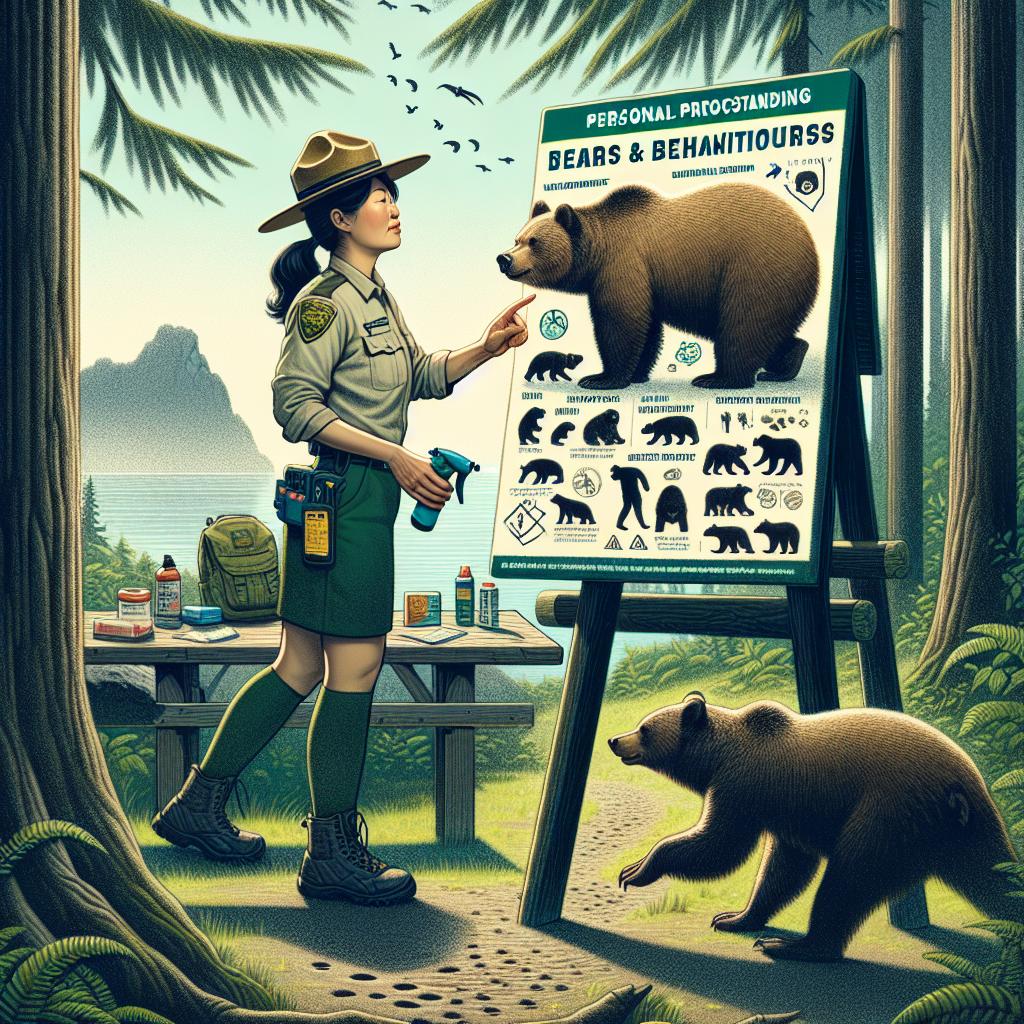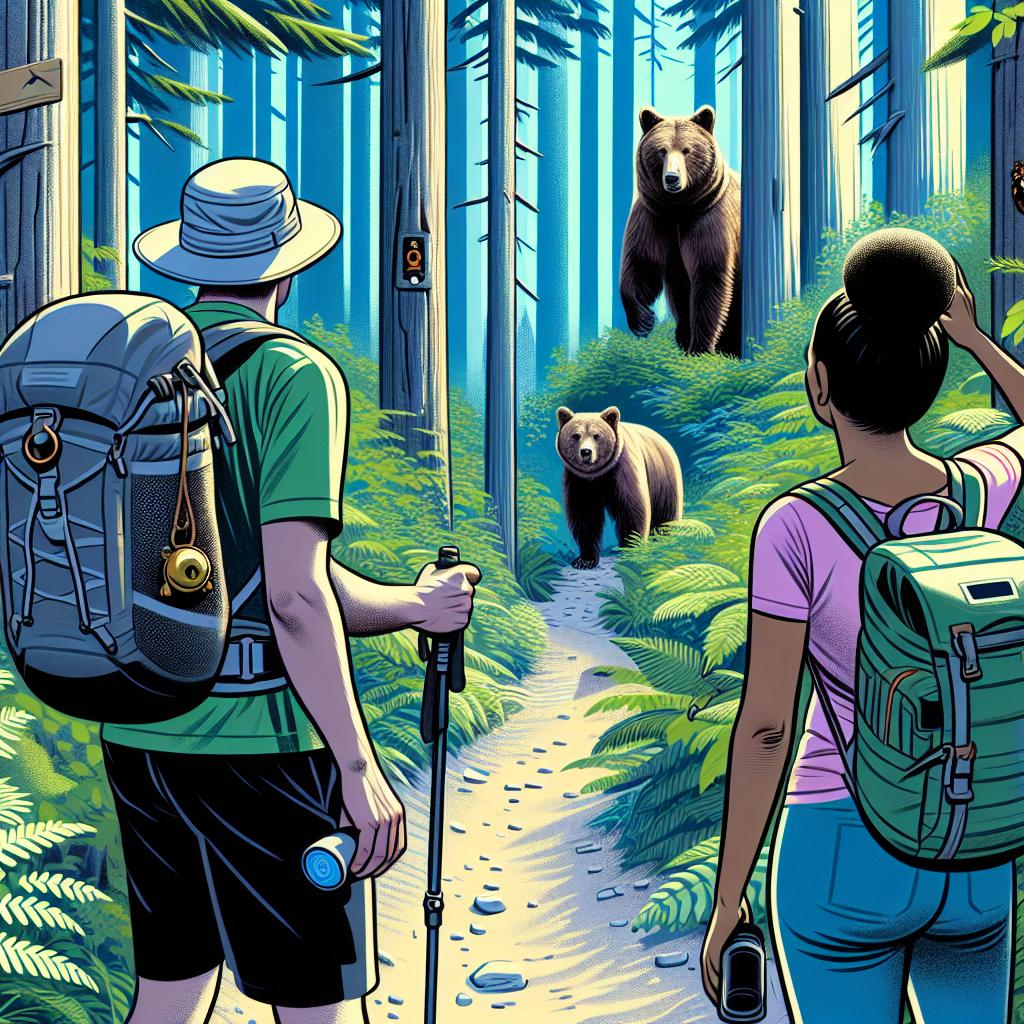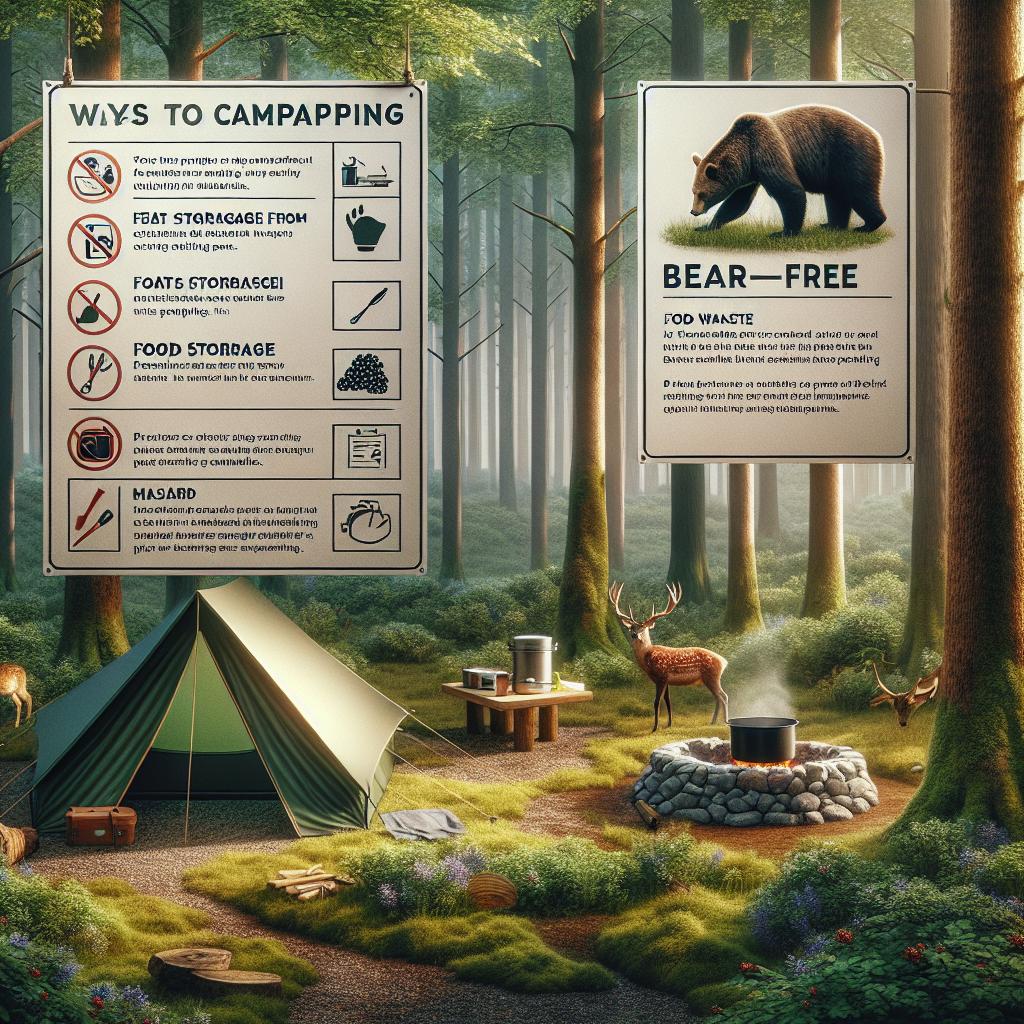As the early morning sun casts golden hues over the lush,sprawling landscapes of the Smoky Mountains,a world of wonder and wilderness awaits the adventurous hiker. The trails weave through dense forests, past babbling streams, and over majestic peaks, offering a glimpse into nature’s untouched beauty. Yet, amidst this serene splendor lies the natural habitat of one of the region’s moast iconic inhabitants—the bear. For those venturing into this majestic terrain, understanding how to coexist safely wiht these majestic creatures is crucial. In this guide,we explore the delicate dance of respect and caution,ensuring that your journey through the Smoky Mountains is as secure as it is awe-inspiring. From recognizing bear behaviors to implementing preventative measures, we provide essential insights to help you tread safely and leave no trace on your wilderness adventure.
Understanding Bear Behavior to Protect yourself
Understanding bear behavior can be a critical factor in ensuring your safety while hiking in the Smoky Mountains. Bears, primarily black bears in this region, are curious and clever creatures that usually prefer avoiding humans. However, certain behaviors can increase the likelihood of unwanted encounters. Black bears are omnivores and their foraging habits can led them to campsites or picnic areas. Be mindful of this by practicing Leave No Trace principles, which include managing your food scents carefully.When you spot a bear in the vicinity,remain calm and avoid sudden movements. Talk quietly to let the bear know you are human and make a wide detour around it, if possible.
To minimize your risk of encountering a bear, adhere to these safety tips:
- Hike in groups and make plenty of noise to alert bears of your presence.
- Secure your food and trash in bear-proof containers.
- Learn to recognize signs of bear activity, such as tracks or scat.
- If a bear dose approach you, stand your ground, try to make yourself look larger, and wave your arms.
Below is a speedy-reference table to better understand how to respond during different types of bear encounters:
| Encounter type | Bear Behavior | Recommended Action |
|---|---|---|
| Curious Bear | Watching you from a distance | Stay calm, talk softly, and slowly back away |
| Aggressive Bear | Charging or making loud noises | Stand your ground, make loud noises and appear larger |
| Passive Bear | Foraging nearby, not paying attention | Keep distance, do not approach |
Essential Gear and Supplies for Bear Safety
- Bear Spray: Considered an essential for anyone venturing into bear country, bear spray is your first line of defense. It’s crucial to practice removing the canister from its holster or pack quickly, much like a quick-draw competition. While it’s not designed to harm the bear, it should deter a charging one. remember, when using bear spray, always aim slightly downward so the cloud of mist engulfs the bear’s face.
- Bear Bells: While their effectiveness is debated among wildlife biologists,bear bells create a constant noise that signals your presence. This device, often attached to your backpack or clothing, can help in avoiding surprising a bear.Pair these with a conversation or occasional shouts to further give notice of your approach.
- Food Storage Bags and Canisters: Keeping food in airtight, bear-proof containers is paramount. Bears have an exceptional sense of smell, and even the smallest of crumbs can pique their curiosity. Invest in odor-proof bags or canisters and ensure they’re used religiously, keeping all food, cooking equipment, and waste within them.
| Item | Purpose | Why Essential |
|---|---|---|
| Bear Spray | Deterrent | Stops a charging bear |
| Bear Bells | Noise Maker | Avoids surprise encounters |
| Bear Canister | Food Storage | Keeps scent contained |
Keep in mind that the clothing and footwear you choose can also play a crucial role in your safety repertoire. Opt for muted, earth-toned garb that blends in with the natural surroundings; bears rely on their excellent sight for detecting movement. Additionally, sturdy hiking boots with good grip can help you traverse uneven terrain quickly and efficiently—remember, speed can be an ally. Coupled with a well-packed first aid kit, complete with wound care and treatments for allergies, you’re prepared for the unexpected. Lastly, know the art of making noise when necessary.Use intimidation tactics if a bear comes too close, such as raising your arms while speaking firmly, letting them know you mean business.
Strategies for Encountering a Bear on the Trail
When you unexpectedly come across a bear on the trail, it’s essential to stay calm and assess the situation. Avoid sudden movements and resist the urge to run; this can trigger the bear’s natural predator instincts. Instead, focus on making yourself appear larger by raising your arms or standing on higher ground. Speak in a calm, assertive voice to let the bear know you are not a threat. If the bear appears to be curious or not intimidated, slowly back away while maintaining eye contact, ensuring you don’t turn your back on the animal.
Sometimes, encounters can escalate despite your initial efforts. As a last resort, knowing the difference between a defensive bear vs. a predatory bear can influence your next steps. Defensive bears, like female bears with cubs, respond to perceived threats by mock charging.Try to hold your ground as they usually stop before contact. Predatory bears often display different behaviors like gradually approaching. In such cases, use bear spray if available and prepare to fight back aggressively. Here’s a brief comparison:
| Behavior | Defensive Bear | Predatory Bear |
|---|---|---|
| Approach | May charge, then stop | Slow, steady approach |
| Response | Back away slowly | Use bear spray |

Preventive Measures for a Bear-Free Campsite
Ensuring a bear-free campsite requires both proactive measures and an awareness of your surroundings. Start by choosing a campsite that is distanced from bear paths or known habitats. When setting up camp, opt for locations away from dense forest edges and near open areas to maintain visibility. Properly managing food and scented items is crucial; store all attractants in bear-resistant containers and hang them at least 12 feet off the ground if no bear boxes are available. Keeping your cooking area and sleeping area at least 200 feet apart is also advisable to deter curious bears.
Maintaining cleanliness is equally crucial. Scrub down all surfaces that come into contact with food, such as tables and cookware, with fragrance-free soaps.Disposing of waste properly can make a notable difference; pack out all garbage and utilize local bear-proof disposal systems where available. Don’t forget personal care items as they can be attractants too; ensure toiletries are stored securely with your food supplies. To get a quick overview of essential preventive measures, peruse the handy table below:
| Preventive Measure | Recommended Action |
|---|---|
| Campsite Selection | Choose open areas away from bear trails |
| Food Storage | Use bear-resistant containers |
| Cooking Area | Set up 200 feet away from sleeping area |
| Cleanliness | Use fragrance-free soaps |
| Garbage Disposal | Pack out trash, use bear-proof systems |
Q&A
Title: How to Stay Safe from Bears While hiking in the Smoky Mountains
Q&A Section
Q1: Why are bears common in the Smoky Mountains?
A1: The Smoky mountains provide an ideal habitat for black bears with their lush forests, abundant food sources, and expansive territory. The diverse ecosystem offers ample opportunities for bears to thrive, making sightings relatively common.
Q2: What are the key signs of bear activity hikers should look for on the trail?
A2: While hiking, keep an eye out for bear tracks, scat, scratched trees, overturned rocks, and disturbed beehives. These signs indicate recent bear activity, suggesting you need to exercise heightened caution.
Q3: What should I do if I encounter a bear on the trail?
A3: If you encounter a bear, remain calm and avoid sudden movements. Do not run or turn your back. Back away slowly while talking calmly in a firm voice. Give the bear plenty of space to move away, keeping your movements intentional and non-threatening.
Q4: What actions should I avoid if I see a bear while hiking?
A4: Avoid approaching or feeding the bear, as this can make them more aggressive. Do not attempt to climb a tree,as bears are excellent climbers. Never leave your food unattended or try to take a selfie with the bear—this is both unsafe and illegal in national parks.Q5: Are there specific items I should carry to deter bears?
A5: Carrying bear spray is highly recommended as a deterrent. It is an effective non-lethal tool for warding off bears in close encounters. Also, consider carrying a whistle or air horn to make loud noises, which can help to scare the bear away.
Q6: How can I secure my food while camping to prevent attracting bears?
A6: Store food in bear-proof containers or hang it at least 10 feet off the ground and 4 feet away from any vertical support. Be mindful of food wrappers and cooking residues. Make sure to clean your campsite thoroughly and never store food inside your tent.
Q7: When is the best time to hike to minimize the risk of encountering bears?
A7: Bears are most active during dawn and dusk. Plan your hikes during the middle of the day when bear activity tends to be lower. Additionally, hiking in groups and making noise while on the trail can help to alert bears to your presence and reduce the likelihood of an encounter.
Q8: Are there specific trails where bear sightings are more common?
A8: While bears can be spotted anywhere in the Smoky Mountains, certain trails like abrams Falls, Cades Cove, and the Appalachian Trail have higher frequencies of bear sightings. Always stay updated with local ranger reports for any bear activity on specific trails before heading out.
Q9: How do park authorities help manage bear populations and ensure hiker safety?
A9: Park authorities engage in active bear management, which includes monitoring bear populations, educating the public, and implementing measures to prevent encounters. They use data from sightings and incidents to inform policies and guidelines that promote both bear conservation and hiker safety.Q10: what should I do if I am injured during a bear encounter?
A10: In the unfortunate event you are injured, try to protect your vital areas and seek medical attention as soon as possible. report the incident to park authorities immediately, as they can offer assistance and ensure others’ safety by tracking bear behavior in that area.
By staying informed and prepared, you can experience the beauty of the smoky Mountains safely, respecting both the wildlife and the pristine environment they call home.
Final Thoughts
As you lace up your boots and prepare to venture into the mesmerizing embrace of the Smoky Mountains, let the knowledge of bear safety guide your steps. Remember, the wild beauty of this majestic landscape thrives in harmony with its inhabitants, including the bears that call it home. By staying vigilant, respecting their space, and adhering to the principles of bear safety, you not only protect yourself but also preserve the delicate balance of this breathtaking ecosystem. May your journey be filled with awe-inspiring vistas, the serenity of rustling leaves, and the thrill of discovering nature’s wonders, all while remaining safe and respectful travelers in the bears’ backyard.Happy hiking!

